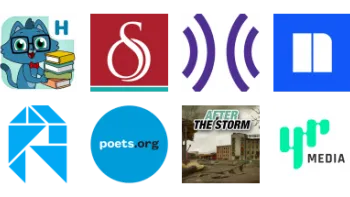Take a look inside 10 images
Actively Learn
Pros: Intuitive to use, with excellent built-in questions and options to add custom prompts.
Cons: Many of the best features require a paid subscription. Writing is limited to commenting.
Bottom Line: Far beyond the average e-reader, this tool helps students connect with texts and each other while giving teachers useful insight into student thinking.
Using Actively Learn can help you manage and monitor how students engage with what they read. Within the tool, discussions about a text can develop organically, fostering more authentic participation. Reluctant hand-raisers might enjoy the option of responding in the margins and thinking through their remarks. For example, students can rotate the responsibility for adding key questions to a text, and the class can have a self-directed or teacher-led discussion on the student-proposed topics. This process might not come naturally for your students, so be ready to teach and model effective annotation skills and productive discussion practices. Have your students take over and ask questions, annotate, and start discussions to help your classroom develop more student-centered, student-led reading practices. Rely on your own expertise to help students chunk readings, and keep adding questions along the way to help guide the conversation and improve students' understanding.
Embedded polls that show students how opinions break down in a classroom also offer great hooks to kick off classroom discussion. Teachers can project the text and poll, get students to elaborate on their responses, and then work through the rest of the text as a classroom, using comments as a way to spread discussion around the room and invite students to develop their initial thoughts. For more ideas, the extensive teacher resources section and blog feature a lot of resources and inspiration for how to adapt Actively Learn to your classroom.
Actively Learn is a web-based reading platform where students can highlight, annotate, and discuss texts as they read. Teachers can assign texts to students solo and in groups so that whole classes can read, annotate, and interact around texts at their level. The site contains thousands (3,300 and growing) of free ELA, science, and social studies texts, from The Picture of Dorian Gray to George Washington's "Farewell Address" to recent news reports on climate change. Texts are organized into units, including novel units, or can be browsed by theme, genre, or news. Whatever the category, teachers can filter by grade, standard, and Lexile level. Don't see what you want? Teachers can upload any text of their choosing, from online articles to their own media. If you or your school spring for a paid subscription plan, you can also access copyrighted materials through the platform, including full books.
Most titles include Common Core-aligned and NGSS-aligned discussion questions for students to interact with. These detailed, engaging questions and media make it easy to chunk readings and draw students into the text. Also, students can add their own questions, ideas, and annotations to spark class interaction, although this could be challenging for students with less experience in digital reading. It's also possible for teachers to monitor their students' progress, or even see students' notes as they're writing in their own "copies" of texts. The app's developers continue to add features that make the reading experience more flexible and accessible, including language translation options and flexible text-to-speech features. Plus, the developer's website features videos, blog posts, and extensive guidance on thoughtful ways to integrate this tool into the classroom.
Full Disclosure: Actively Learn and Common Sense Education share a funder; however, that relationship does not impact Common Sense Education's editorial independence and this learning rating.
Unlike other literacy platforms, Actively Learn leans into the reading experience. As a result, Actively Learn offers seemingly boundless options for what students can do inside a text: adjust, annotate, edit, share, and collaborate. Students can also view their progress in reading proficiency and vocabulary reports. Throughout, students are engaged both in reading the texts and also in the thinking processes that surround this type of active reading experience. It's the kind of interactive tool that, if used well, can open up some deep, high-quality communication among teachers and students alike. The accessibility tools are also a standout feature. There are tons of ways to customize what appears on screen to make it more accessible to readers with a range of needs. While it's not as expansive in its supports as readers focused on accessibility, it offers enough options for most classrooms.
In terms of text selection, it's great to see so many excellent public domain classics available in one place; there are thousands of articles (including current events and news) and books available with embedded questions, and there's solid integration with Google Classroom and Canvas, and those features alone may make the free version a good fit for some teachers. However, it's more likely that the paid plan (called premium or Prime) will be a more powerful and ultimately useful solution for teachers, since most of the features for uploading content, differentiating instruction, promoting student collaboration, and assessing student progress are available only for a fee. Moreover, the free version's limits on uploading content (just three items per calendar month) could feel especially limiting to teachers who want to do a lot of customization. If your school or district springs for a subscription, there's a lot of potential here, and while there's still some room for the platform to grow (e.g., by adding a better recommendation engine for texts), it's a stellar option.




















